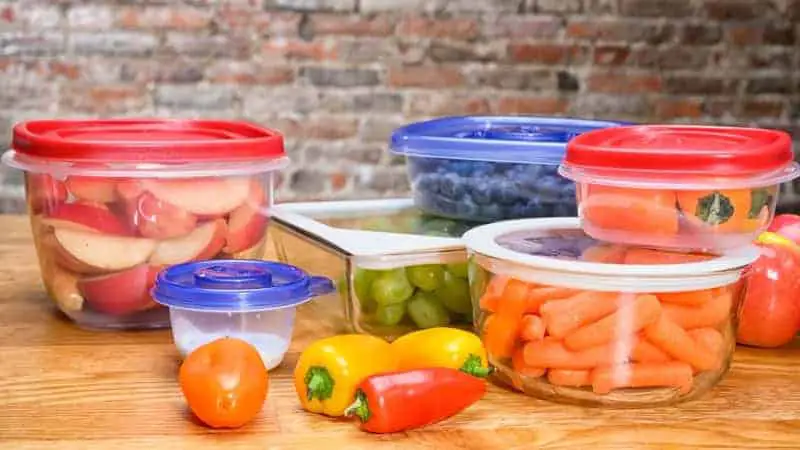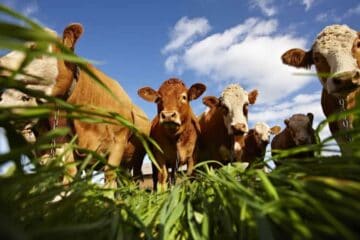Table of Contents
Food Production And Storage
There are three main aspects to consider when discussing food production. These comprise:
- Government’s role in agricultural production.
- The environmental factors or elements that are necessary for the production of food.
- Methods of improving crop production.

Roles Of Government In Agricultural Production
The government plays various roles in the production of agricultural goods.
The government has a vital role in the advancement of agriculture, contributing to the resolution of various issues that have hindered its progress. Government involvement in agricultural production and strategies to enhance food production encompass:
1. Provision of Financial Assistance
Financial assistance has been provided by the government through several of its agencies.
2. Provision of High Quality Planting Materials
Farmers should be given and distributed high-quality planting materials such as seeds and other types of planting stock that have the potential to yield high crops and are resistant to diseases, pests, or drought.
3. Supply of Agro-Chemicals
The supply of agricultural chemicals, such as fertilizers, weed killers, disease-control substances, bug sprays, vaccines, and medications, should be made available and distributed at reduced prices in order to enhance the productivity of crops and animals.
4. Provision Of Extension Services
The government should offer extension services to farmers in the community, which will inform them about modern farming methods and techniques.
5. Effective Transportation Network
The government needs to build roads in order to facilitate the transportation of agricultural products from farms or rural areas to urban centers. Insufficient infrastructure and vehicles would result in a significant amount of produce going to waste, which could demotivate farmers.
Environmental Factors Affecting Agricultural Production
The environmental factors that influence food production can be categorized as climatic factors, biotic factors, and edaphic factors.
Climatic Factors
1. Rainfall
Rainfall or Precipitation is the process where excessive condensed water vapor in the atmosphere is released and falls back to the ground.
2. Wind
The phenomenon of wind occurs when the air is in motion, and it also has an impact on agricultural productivity.
3. Temperature
Temperature refers to the measure of the amount of heat energy within a body or the level of hotness or coldness in a particular location at a specific moment.
4. Sunlight
Sunlight, also known as sunshine, refers to the heat and duration of time that a particular location receives the rays of the sun. It is essential for the process of photosynthesis.
5. Relative Humidity
The level of moisture in the air, known as relative humidity, plays a crucial role in agricultural production.
6. Solar Radiation
Solar radiation refers to the quantity of heat or sunlight that is emitted into the atmosphere.
Biotic Factors
- Soil organisms encompass a variety of living organisms such as bacteria, fungi, earthworms, rodents, termites, and more.
- Pests refer to various creatures such as insects, rodents, birds, and certain mammals including man.
- Parasites consist of various organisms such as ticks, liverflukes, tapeworms, dodders, mistletoes, and lice.
- Various vices such as viruses, bacteria, fungi, and protozoa can be responsible for causing diseases.
- Weeds pose a challenge for crop growth as they compete with crops for essential resources such as space, water, nutrients, and sunlight, resulting in a decrease in crop productivity.
- Predators, such as birds, rodents, and praying mantises, are animals that prey on others for sustenance. Certain predators specifically target farm animals, including hawks that often feed on young chickens.
Edaphic factors
• Soil pH
Soil pH The acidity of soil plays a role in the development of plants, as well as having the potential to be harmful to plant and animal life.
• Soil texture
Soil texture determines the specific kind of soil found in a particular area.
• Soil structure
The fertility of the soil is determined by its structure.
Methods Of Improving Food Production
There are several methods that can enhance food production. Some of these include:
- Use of resistant varieties
- Weed Control
- Timely planting
- Implementation of improved farming techniques.
- Fertilizers and manure application
- Control of pests
- Control of diseases
- Use of good crop varieties.
Causes of Food Wastage
Farmers sometimes waste a significant amount of the food they produce, which ultimately results in a shortage of food. The factors contributing to this wastage are as follows:
- Inadequate processing facilities.
- Insufficient storage options lead to a significant amount of food wastage due to inadequate facilities for preserving and storing the food.
- Damages caused by parasites and pests.
- Damages caused by diseases.
- Inadequate transport facilities.
- Many food items go to waste when they are not harvested at the appropriate time.
- Bush burning.
- Food wastage can occur due to natural disasters such as floods and droughts, which typically lead to a decrease in the availability of food.
Methods Of Preserving And Storing Food
There are several methods available to preserve or store food.
• Salting
Salting refers to the process of sprinkling table salt onto farm products in order to store or preserve them. Examples of farm products that can be preserved through salting include meat and fish.
• Freezing and refrigeration
Freezing and refrigeration encompass the utilization of cold storage facilities like refrigerators and deep freezers to keep and conserve specific food items such as meat, fish, vegetables, and fruits.
• Irradiation
Irradiation refers to the process of exposing certain types of food to intense radiation, such as ultraviolet rays, to prevent the growth of spoilage-causing organisms. Some examples of food that can be preserved through irradiation include meat, canned food, seeds, tubers, and fruit juice.
• Sun-drying
Sun-drying, also known as drying, is a technique in which certain crops or products are preserved by utilizing the natural heat of the sun. Items such as fish, meat, and yam chips can be dehydrated through this method.
• Smoking
Smoking involves the process of drying various agricultural products using the smoke from an open fire. Some examples of food that can be preserved through smoking include meat and fish
• Preservatives
Chemicals are utilized in this food preservation technique, where harmless substances are added to specific types of food. Various food items, such as cakes, soft drinks, and vegetables, can be preserved by incorporating these chemicals.
• Boiling and frying
Heating, boiling, frying, or roasting are methods used to store or preserve various farm products. Examples of food items that can be preserved through this method include meat, fish, soup, yam, plantain, and vegetables, among others.
• Canning or bottling
Canning or bottling is a method used to preserve and store various types of food in cans or bottles, ensuring they can be consumed at a later time. This preservation process requires specific conditions, and examples of food items that can be preserved through canning or bottling include fruits, meat, fish, and beans.
• Pasteurization
Pasteurization is a method of preserving certain food items by subjecting them to heat at around 72oC for approximately 15 minutes, followed by rapid cooling. This process allows for the safe storage of various products such as milk, cheese, and beer.



